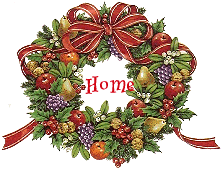

The Thanksgiving holiday celebrated each November in the United States is known worldwide as an American custom, but its roots extend far back into human history.
According to research conducted by The Center for World Thanksgiving at Thanks-Giving Square, the first Americans observed rituals and ceremonies to express gratitude to a higher power for life itself. A Seneca Indian ritual, for example, states, "Our Creator ... Shall continue to dwell above the sky, and this is where those on the earth will end their thanksgiving." Another quotation attributed to American Indians before Columbus is, "The plant has its nourishment from the earth and its limbs go up this way, in praise of its Maker ... like the limbs of a tree."
The Pilgrims' First Harvest Feast

According to historical sources, the Pilgrims never held an autumnal Thanksgiving feast. The Pilgrims did have a feast in 1621 near Plymouth, Massachusetts, after their first harvest. This is the feast people often refer to as "The First Thanksgiving." This feast was never repeated, so it can't be called the start of a tradition, nor did the colonists or Pilgrims call it a Thanksgiving Feast. In fact, to these devoutly religious people, a day of thanksgiving was a day of prayer and fasting.
Nevertheless, the 1621 feast has become a model for the Thanksgiving celebration in the United States. More than likely, this first harvest feast was eaten outside, based on the fact that the colonists didn't have a building large enough to accommodate all the people who came. Native Americans definitely were among the invited guests, and it's possible, even probable, that turkey (roasted but not stuffed) and pumpkin in some form found their way to the table. The feast is described in a firsthand account presumably written by a leader of the colony, Edward Winslow, as it appears in Mourt's Relation:
"Our harvest being gotten in, our governor sent four men on fowling, that so we might after a special manner rejoice together after we had gathered the fruit of our labors. They four in one day killed as much fowl as, with a little help beside, served the company almost a week. At which time, amongst other recreations, we exercised our arms, many of the Indians coming amongst us, and among the rest their greatest King Massasoit, with some ninety men, whom for three days we entertained and feasted, and they went out and killed five deer, which they brought to the plantation and bestowed on our governor, and upon the captain and others. And although it be not always so plentiful as it was this time with us, yet by the goodness of God, we are so far from want that we often wish you partakers of our plenty."
From this we know that the feast went on for three days, included 90 "Indians," as Native Americans were called then, and had plentiful food. In addition to the venison provided by the Native Americans, there was enough wild fowl to supply the village for a week. The fowl included ducks, geese, turkeys and even swans.

Thanksgiving in America

Thanksgiving Day in America is a time to offer thanks, of family gatherings and holiday meals. A time of turkeys, stuffing, and pumpkin pie. A time for Indian corn, holiday parades and giant balloons

First Thanksgiving
Collection of Turkey recipes
Thanksgiving History
Granny's Thanksgiving bread
Carving the Perfect Turkey
National Turkey Federation-Turkey Facts
Thanksgiving Puzzle Game

Timeline of American Thanksgiving Holiday

Turkey Pardon
As is customary, the President of the United States is expected to pardon a turkey on the eve of Thanksgiving at a White House ceremony. The tradition dates back fifty years to Harry Truman and has been compassionately enforced ever since. The turkey is given to Kidwell Farm, a petting zoo at Frying Pan Park in Herndon, Virginia. The turkey in question gets a last minute pardon before arriving, and is then led to his new home at the Turkey Barn after enduring a turkey "roast" full of poultry humor and history.

President Bush Issues Turkey Pardon 2001
National Turkey Pardon 2000
How Macy's thanksgiving Parade started



It actually stems from European tradition.
In the 1920's many of Macy's department store employees were first-generation immigrants.
Proud of their new American heritage, they wanted to celebrate the American holiday with the type of festival they loved in Europe
The employees marched from 145 Street down to 34th Street dressed as clowns, cowboys, knights and sheiks. There were floats, professional bands and 25 live animals borrowed from the Central Park Zoo.
With an audience of over a quarter of a million people, the parade was a hit!
Large balloons first appeared in 1927 with Felix the Cat. One tradition long gone is the releasing of the balloons. They would float for days and the lucky finder could claim a prize!
Macy's Parade 2001

